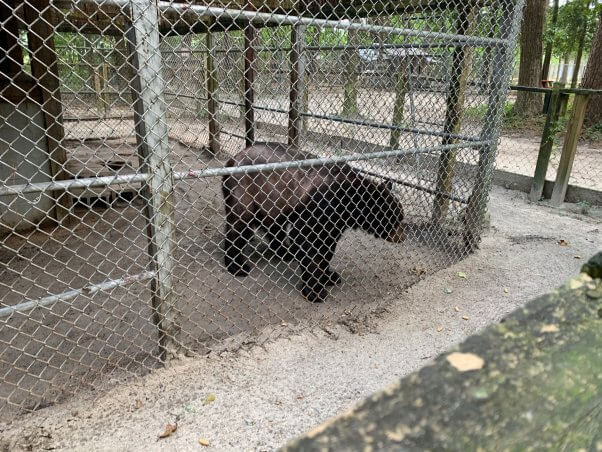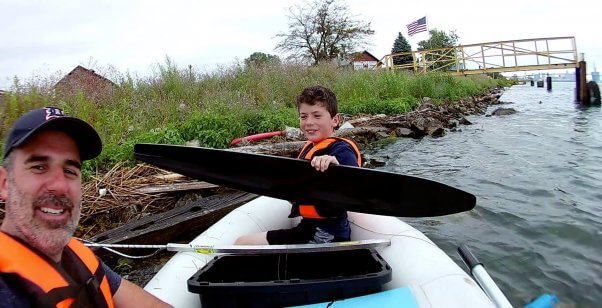Want to Teach Students Outside the Classroom? Plan a Socially Distant Field Trip With TeachKind!
Close your eyes, take a deep breath, and think back to the days of permission slips, packed lunches, and a bus ride to an exciting destination. Students eagerly awaited that day away from the classroom, because field trips gave them a chance to learn lessons in the real world and sparked interest that would stay with them for years to come. While teachers and students may not be able to go on traditional field trips right now, they can use these ideas for humane socially distant field trips all year round!
The Cruelty of Animal-Based Attractions
There’s a great big world outside the classroom, and teachers can help their students explore it without hurting animals. Many people, including educators, realize that captive-animal attractions (such as circuses, marine parks, and roadside zoos) are not educational because visitors see only mere shadows of the animals, defeated individuals who have no opportunity to engage in natural behavior or live as nature intended. These places teach students that it’s acceptable to imprison animals, deprive them of their freedom, prevent them from exploring and establishing natural territory, breed and group them as we see fit without regard for their preferences, and watch them go insane out of frustration and loneliness. Taking students to places that exploit animals for profit is certainly contrary to the development of empathy.
Animals in circuses, marine parks, and roadside zoos are forced to spend their lives behind bars or in cramped tanks just to entertain the public. Their living conditions are often dismal—typically, they’re confined to small, filthy, barren enclosures. This deprivation—combined with relentless frustration, loneliness, and even abuse from the people who are supposed to be caring for them—causes many captive animals to lose their minds.

Let’s Go on a Humane (and Socially Distanced) Field Trip!
As coronavirus precautions have most students limited to taking walks, going on short trips to the park with their family, or spending more quality time in their own backyard (if they have one), extending real-world learning may seem a bit challenging—but there are still lots of ways they can observe and learn about the truly amazing abilities of animals near and far without disturbing them.
Have Students Start in Their Own Backyard
Students can go on a field trip in their own backyard with this scavenger hunt list in hand, seeing various types of birds, mammals, insects and other animals, depending on where they live. If they don’t have access to a backyard, they can still participate by observing animals through a window, walking through their neighborhood, or visiting a local park. All animals have a purposeful life, and it’s important for students to understand the dynamic world around them. Remind them not to touch, bother, or get too close to animals—they should just watch them from a respectful distance.
Virtual Field Trips: Live Cams
It’s awe-inspiring to watch animals in their natural habitats. Observing how they move, what they eat, when they rest, and how they interact with their family members or other species gives students a glimpse into their world. Students can’t observe animals’ natural behavior in circuses, marine parks, or roadside zoos, so live animal cams are ideal for teaching about animals and empathy. They’re also exciting, because they allow humans to visit the world of animals in real time—without disrupting them. From watering holes in Africa to the Arctic tundra, let live videos help your students experience what life is like for wild animals on their own terms, not ours. (These live cams or live cam highlights are great for rainy days—you and your students don’t even have to leave home or the classroom.)
Note: TeachKind does not promote all live animal cams. Steer clear of ones from places like SeaWorld, where animals are exploited and kept in concrete tanks. We’ve created a full list of approved live cams and live cam highlights featuring land animals, birds, marine life, and sanctuaries.

You may also want to consider a virtual field trip to a reputable animal sanctuary that has live cams. Observing animals in this type of environment gives you a good opportunity to discuss the reasons why they needed to be rescued.
Keep in mind that the fundamental purpose of legitimate sanctuaries is to provide animals with safe, comfortable conditions so that they can have as natural a life as possible. No reputable sanctuary breeds or sells animals. Here’s how to tell if a place is a real animal sanctuary.
Visit Your Local Park
Students who go to a park are sure to see lots of animals there. Have them take a notebook along and draw and write about the individuals they see. They might notice a family of ducks swimming across the lake, see a curious squirrel or two, or feel a tickle when an ant crawls across their arm! Check out these interesting facts about animals at the park and ways to be a polite guest in their outdoor homes.
Remind your students not to crush bugs or chase birds or any other animals when they visit the park. Because animals can take care of themselves, reiterate to students that they should not feed wild animals—doing so can harm them.
Have Students Go Trash Fishing
What is trash fishing? It’s fishing for trash instead of animals! So instead of yanking fish out of the water (where they can’t breathe), students can help clean up their home. Remind students to wear gloves, life jackets, and other safety gear (young students should also be accompanied by an adult) and to follow the guidelines below for properly disposing of trash. A boat isn’t necessary for this activity—local beaches and areas near waterways can be cleaned up on foot. Mother Nature will thank you!
Teach students how easy it is not just to keep our environment clean but also to protect animals from unnecessary pain and suffering by doing the following with the trash that they collect on this field trip (as well as with their own trash at home):
- Cut plastic soda six-pack rings, leaving no diamonds or circles intact that animals could become entangled in.
- Rinse out cans and jars to ensure that no food is left behind. Recycle jars with their lids screwed back on.
- Crush cans to ensure that animals can’t get their faces stuck inside.
- Properly dispose of litter such as string, plastic, and fishing gear.
- Wrap chewing gum in paper and throw it into a trash can.

*****
These humane, socially distant field trip ideas and destinations will set compassionate and responsible examples for your students, so they’re worth promoting all year long.





